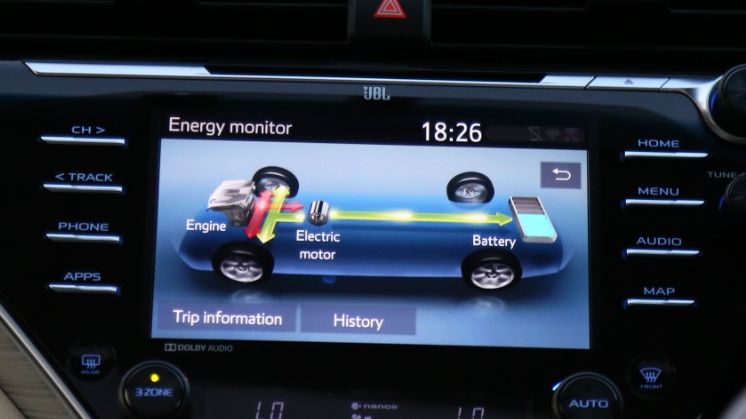Should India skip hybrid cars and move straight to electric vehicles?
With the Indian government advocating early and rapid adoption of electric vehicles, we analyse how hybrid technology can be a good interim solution before the switch over to full EVs
 Toyota Hybrid System
Toyota Hybrid SystemThere’s been a raging debate around hybrid technology vis-a-vis electric vehicles with EV enthusiasts advocating a straight jump to electrics, much in the same way that India jumped from BS4 to BS6 emission standards. Whether that is at all feasible is an altogether different argument, what we are looking at here is the bene'ts of hybrid technology to bridge the gap and bring about quick reduction in emissions.
Check out how the hybrid tech in the Toyota Camry Hybrid works
The automotive value chain
50 per cent of revenue and 60 per cent of employment goes into manufacturing internal combustion engines and the transmission. With electric vehicles having 80 percent fewer components, and thus far less manufacturing input, the big question is what happens to all the manufacturing jobs, and the manufacturing GDP, if we move to electric cars?
The automotive value chain - 50% of revenue & 60% of employment goes into the IC engine + transmission so.... what happens to all the jobs if we move to EV?
The infrastructure issue
Batteries are 50% of EV cost
Charging infrastructure is another issue but that can be scaled up rapidly if there’s a strong enough push. What we need to look at is where India stands in terms of raw materials required for EVs and the localisation of EV components. India right now only has capability of assembling the EV battery packs which is less than 20 per cent of thevalue. As far as making the actual battery cells, the cathode, anode, electrolytes and everything that goes into it, India has no capability, and the earliest this can be localised is 5 years. As for raw materials we will continue to import that
Emissions
When tank to wheel emissions are considered battery electric vehicles are obviously much cleaner. But when you take into account the more relevant well to wheel emissions, hybrids drop the CO2 output to 70gm/km (over IC engines) while electric vehicles put out more CO2 emissions at 90gm/km. These 'gures are from the Camry Hybrid and the iQ electric car on the standard Indian test cycle. In fact the Camry Hybrid’s CO2 emissions are under 50 per cent of what will get enforced when CAFE 2 is implement in 2023 and its fuel e=ciency is already 48 per cent better than the pure-IC Camry.
According to Toyota if we adopt hybrids — in addition to the planned 30% electrics by 2030 — fuel savings will go up by 2.5 times and CO2 will reduce by 3 times
On the same test runs, on a test route in New Delhi, it was found that the Camry Hybrid runs on the hybrid powertrain 62 per cent of the time. That means for 62 per cent of the time the Camry Hybrid is a zero emission vehicle. While on the emission front it is worth nothing that most of India’s electricity comes from coal and the (ambitious) target for 2031 is to have 40 per cent of electricity from renewable sources.Studies by Toyota claim that if 70 per cent of IC engines were to convert to hybrids and the remainder were electrics, by 2030, the fuel savings will go up by 25 per cent and CO2 emissions will reduce by 3 times.
Taxation and localisation for hybrids
Toyota’s suggestion for taxation is logical and in line with what governments the worldover are implementing — a tax based on CO2 emissions. Their proposal is to continue with EVs at 5 per cent GST and move hybrids to the next slab rather than have hybridstaxed the same as IC engined vehicles. That will prompt localisation and the big play here is Toyota’s global partnership with Suzuki where sharing of hybrid technology is one of the key pillars. With Maruti Suzuki’s 50 per cent Indian market share, getting MSIL to adopt hybrids will accelerate the localisation and thus reduce cost which, together with the lower tax structure, will make hybrids more affordable and result in mass adoption. Maruti
Toyota quotes a minimum volume of 50,000 a month to make localisation of the battery, power control unit and motor components viable, though even 10,000 units a month will make assembly of the power control unit and transaxle viable. Work has already begun on this localisation front and at the Auto Expo Maruti Suzuki did reveal they were exploring ‘strong hybrid’ technology.


